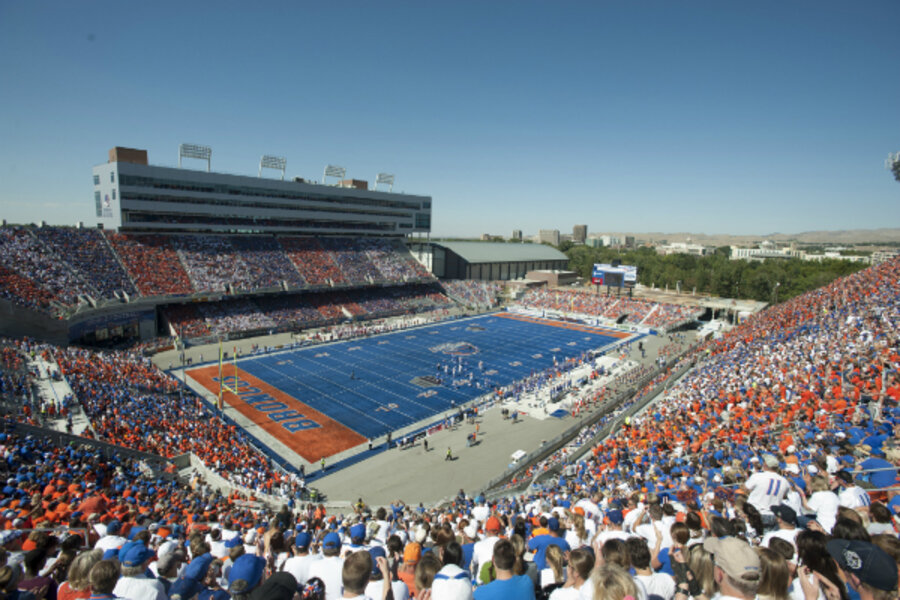Boise State seems intent on making a color statement beyond its famous blue field. While coordinating the colors fans wear to games is increasingly common in sports these days, the Broncos are trying to maximize the concept. At each home game, the athletic department has established a different color scheme, with fans voting to all dress in orange for the Sept. 28 game against Southern Mississippi.
For the other home games, the university has come up with a variety of blue, orange, and white seating-section combinations (see diagrams at http://www.broncosports.com/colorschemes/). The athletic department does not do anything special to make sure spectators wear the correct colors, but Max Corbet, an associate athletic director, says, “The fans have been pretty good about it and I think a lot of the results have come from peer pressure in the different sections.”







